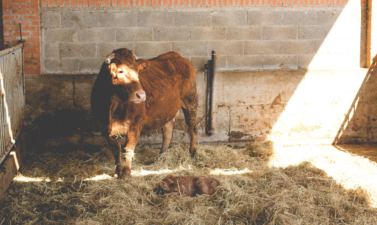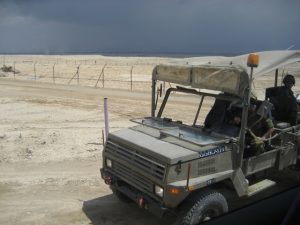 These are no ordinary pyramids. When built, eight orbiting solar-paneled pyramids surrounding one larger “earth” will generate enough energy to power 250 Abu Dhabi homes.
These are no ordinary pyramids. When built, eight orbiting solar-paneled pyramids surrounding one larger “earth” will generate enough energy to power 250 Abu Dhabi homes.
For months we’ve been teetering at the edge of our seats waiting to learn who will win the Land Art Generator Initiative (LAGI) design competition. Finally, our waiting is over.
This morning, at the ongoing World Future Energy Summit (WFES) in Abu Dhabi, Masdar’s Associate Director of Sustainability, Dr. Nawal Al Hosany, awarded the first place prize to the design team responsible for the Lunar Cubit. Second Place Mention went to the Windstalk, and Third to Solaris.
 Designed by Robert Flottemesch, Jen DeNike, Johanna Ballhaus, and Adrian P. De Luca, the Lunar Cubit comprises nine solar-paneled pyramids: the largest in the middle represents the earth, while the eight smaller pyramids – all of which were built in proportion with Egypt’s Great Pyramid of Giza – represent the eight lunar phases.
Designed by Robert Flottemesch, Jen DeNike, Johanna Ballhaus, and Adrian P. De Luca, the Lunar Cubit comprises nine solar-paneled pyramids: the largest in the middle represents the earth, while the eight smaller pyramids – all of which were built in proportion with Egypt’s Great Pyramid of Giza – represent the eight lunar phases.
Each of the smaller “orbiting” pyramids arranged counter-clockwise light up during their corresponding lunar phase.
Designed for construction just outside of Masdar City and in close proximity to the Abu Dhabi International Airport, the pyramids will invite interaction. Visitors will be encouraged to touch the power plant, if they so choose.
Not only is the design beautiful, and a sacred nod to Abu Dhabi’s ancestors who developed their Islamic calendar in concert with lunar phases, but it is also an electricity-generating station that will power 250 homes each year.
How much energy is being produced can be monitored from anywhere in the world, either with a smart phone, or on site at a kiosk.
Using thin amorphous silicon photovoltaic panels that can tolerate high temperatures (up to a whopping 185 degrees F!) and maximize solar capture in low-lighting situations, the pyramids have a combined capacity of 1.74 MW. 
Although slightly disappointing that more homes won’t be powered, given the scope of the project, within five years the Lunar Cubit’s embodied energy will be paid off.
The solar panels will have to be decommissioned after 25 years, a task that will be easy according to the designers, and they are “safe as a pile of sand.” The inverters have a 5 year guarantee and will be recycled when no longer feasible.
Everything has been taken into consideration. The transmission lines and human access routes will be combined in order to minimize disruption to the local ecology. And apart from solar energy, there will be absolutely no byproduct, no moving parts, no emissions, and no run off.
Compared with oil, gas, and nuclear energy generation plants, once built, this will be, hands-down, one of the most beautiful power plants in the world.
More on the Land Art Generator Initiative:
READ: LAGI Guide To Making Renewable Energy Beautiful
Studied Impact’s Power Plant Fit For Living
Artocos: Musical Activism In Dubai



